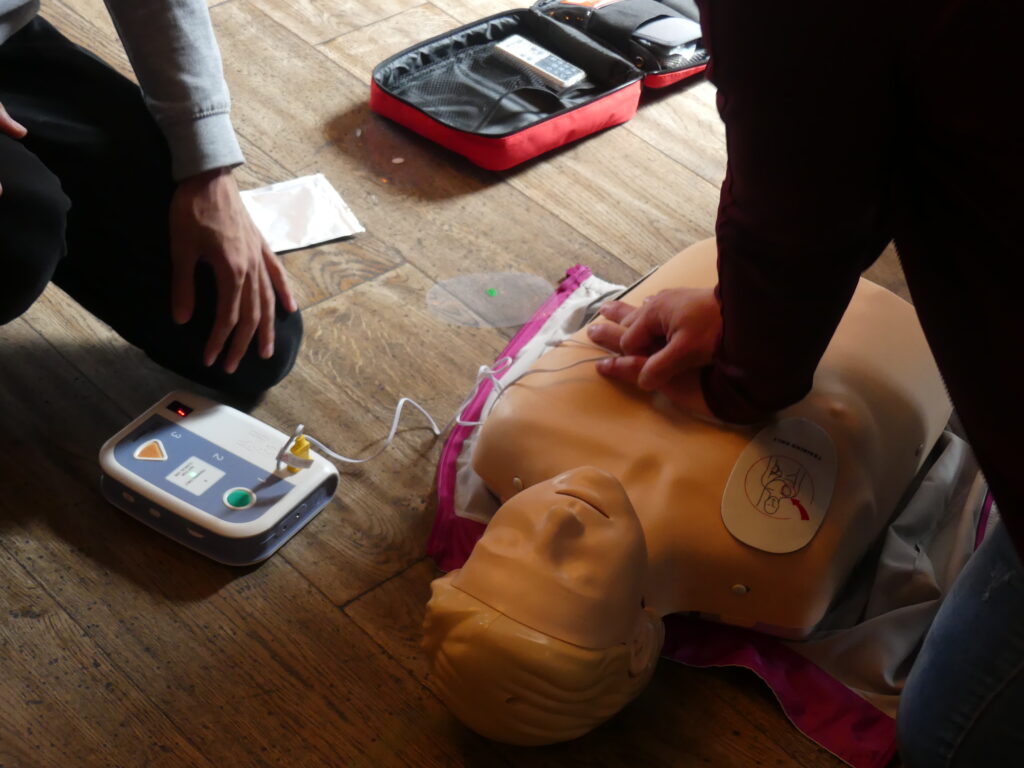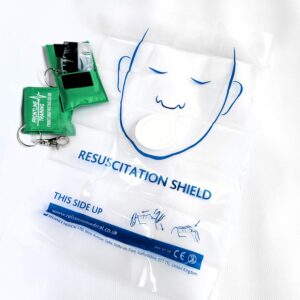Using a Defibrillator
Defibrillators are crucial because they can deliver an electric shock to the heart to restore normal rhythm in cases of life-threatening cardiac arrhythmias, specifically ventricular fibrillation and pulseless ventricular tachycardia. An Automated External Defibrillator (AED) is vital in emergency situations like sudden cardiac arrest, where immediate intervention is needed to potentially save a person’s life by resetting the heart’s rhythm. They are designed to be user-friendly, allowing even non-medical professionals to use them effectively, providing an essential bridge to advanced medical care.

Emergency Advice ⚠️
Using a Defibrillator:
- Call 999 or 112.
- Switch on the defibrillator.
- Remove clothing.
- Stick on pads according to diagrams.
- Follow the voice prompts while continuing CPR.
Actions to take

Start CPR and send for the Defibrillator!
Following the primary survey and discovering that a casualty is unresponsive and not breathing normally, instruct a bystander to immediately dial 999 or 112 for emergency assistance while you initiate CPR. If a defibrillator is accessible, request a helper to locate and fetch it.
- If you are alone, utilise the hands-free speakerphone function on your phone, enabling you to begin CPR while conversing with ambulance control.
- Do not leave the casualty unattended to search for a defibrillator personally, as the ambulance will bring one with them, CPR is more important.

Turn it on and get the pads out
When your helper returns with a defibrillator, tell them to power it on and get out the pads while you continue with CPR. Instruct them to remove or cut through any clothing obstructing access to the casualty’s bare chest, ensuring to wipe away any sweat. The ‘defibrillator ‘Defib’ will provide vocal prompts guiding the necessary actions

Apply the pads
They should stick the pads to the casualty’s chest by peeling off the backing paper and placing the pads as indicated in the diagram.
- Place the first pad on the upper right side just below the collar bone
- Place the second pad on the casualty’s left side below the arm pit

Defibrillator will analyse
The ‘defib’ will assess the heart’s rhythm. Stop CPR and ensure no one is in contact with the casualty. It will then provide a sequence of visual and verbal instructions you should follow.
- If the ‘Defib’ tells you ‘shock advised’, move back and don’t touch. It will tell you when to press the shock button. Once the shock has been delivered, continue CPR for two minutes. It will continue to analyse every 2 minutes.
- No shock is advised? continue CPR for two minutes before the defibrillator re-analyses.

Casualty Responding?
If the casualty displays signs of responsiveness, like coughing, opening their eyes, or speaking, and begins to breathe regularly, place them in the recovery position. Keep the defibrillator connected. Stay vigilant of their level of response and breathing and be ready to administer CPR again if needed.
Train with us
This subject is covered in detail on the following courses that we offer:
- Basic Life Support and Defibrillator Training
- First Aid at Work
- Emergency First Aid at Work
- Paediatric First Aid
- Emergency Paediatric First Aid
- Combined First Aid at Work and Paediatric First Aid
Prepare yourself for anything with our first aid supplies 👀
-
 Universal First Aid Kit£15.00
Universal First Aid Kit£15.00 -
 First Aid Kit – Refill£7.95
First Aid Kit – Refill£7.95 -
 CPR Face Shield Key Ring£3.50
CPR Face Shield Key Ring£3.50



